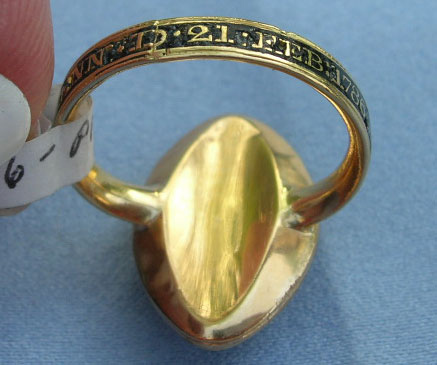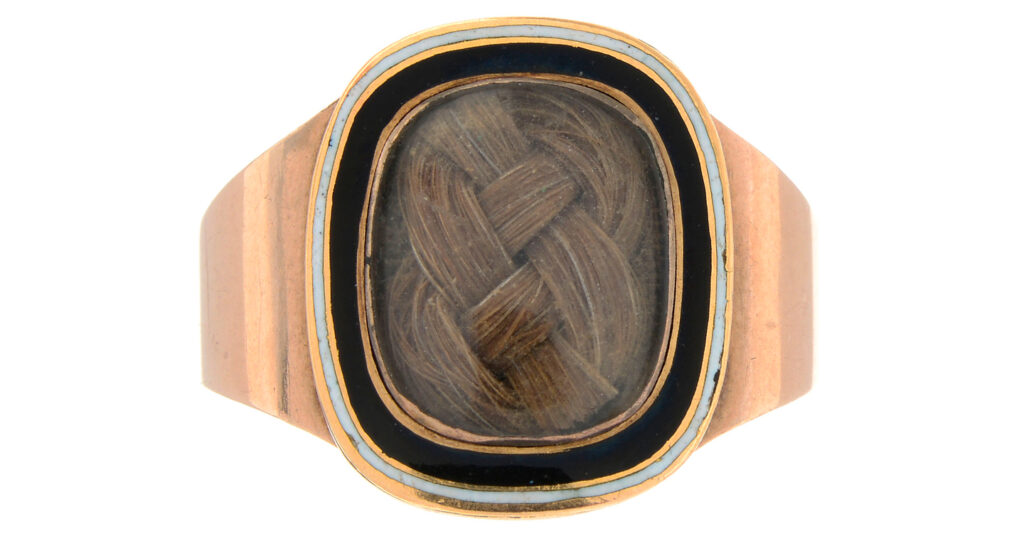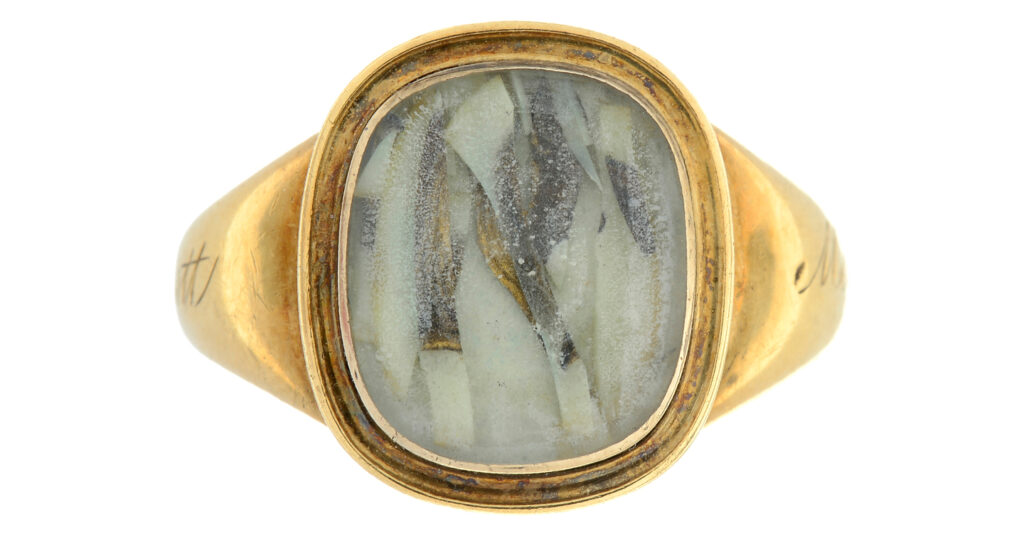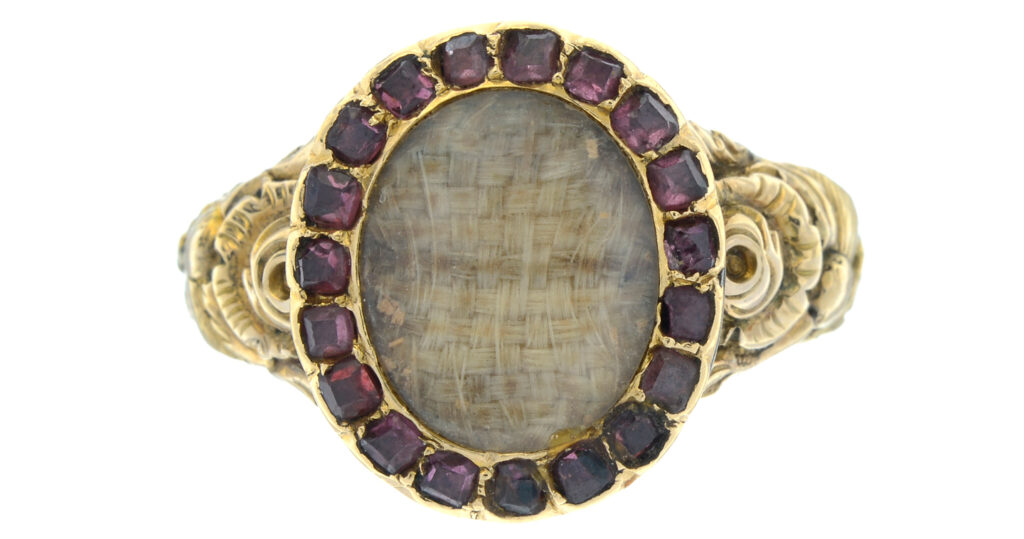1786 Black Enamel Fleur-De-Lis Mourning Ring
The fleur-de-lis is an interesting design for the above ring, especially for a piece of this time. The significance of the motif (as the dedication doesn’t appear to be French) is probably in the symbolism of a lily (lis) growing from the tears of Mary at the foot of Jesus’ cross, hence purity, or the three petals being associated with the trinity. There is also the association with the symbol meaning passion, and when combined with the diamond (true [eternal] love), it becomes a powerful statement.
Notice how the band adapts previous styles from the 17th century. This band, with the dedication around it, is one of the most long-lasting and adaptable styles of mourning band. During the height of the mourning ring, which lasted from c.1680-1900, this style adapted mainstream art styles in fashion to last as a true statement of mourning. This is due to several factors. One is that the band cannot be adapted for another person – the enamelled memento of the person becomes the ring itself and once this is set (without a generic sentiment such as ‘In Memory Of’), the ring belongs to the person who is being mourned. Many other mourning jewels have been re-appropriated over the years and changed to become sentimental jewels without the mourning connotation, but here, there is no question about what the purpose of the jewel is for. Another point to reference with these jewels is that the adaptability of the style could last through different periods, as there is no overt symbolism to put it against fashion. Whereas Neoclassical jewels could lose their meaning as art styles changed or their fashion may have become dated, these bands only changed with their fonts, adapting from the Neoclassical era to the Gothic Revival era in the 19th century with ease.
Where this ring does become generic in its style is the fleur-de-lis, as this could be standardised or changed to accommodate the band. As long as the navette style is used, the Neoclassical sentiment could adapt for any other style of its time, such as a sepia miniature or other mourning/sentimental symbol.









